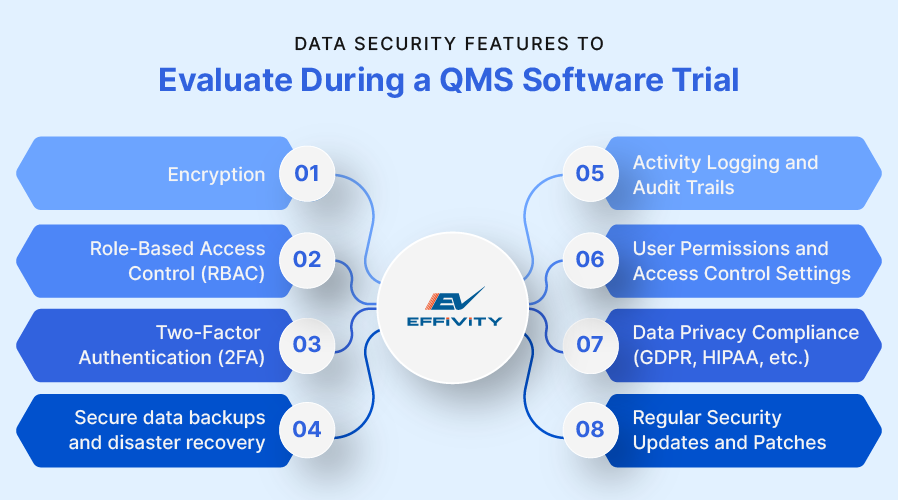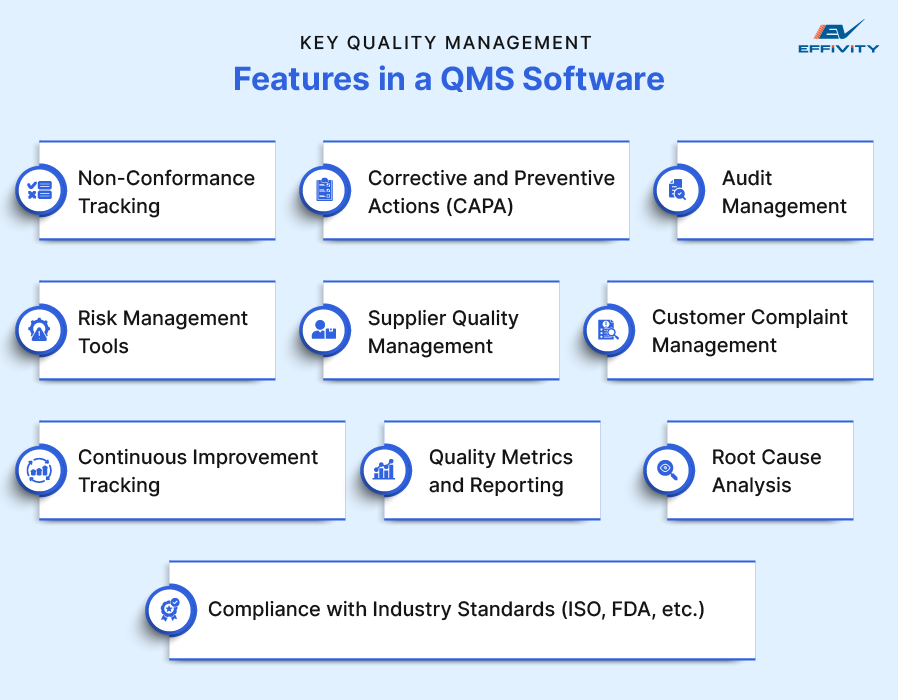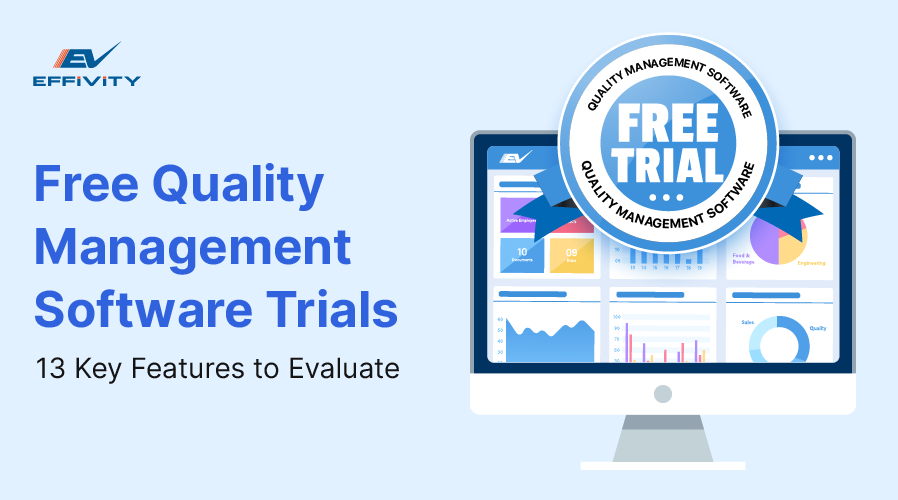Quality management software plays an indispensable part in maintaining high-quality standards for a business. It streamlines processes, reduces waste, and improves your overall compliance.
But with so many options out there, choosing the right QMS software can be overwhelming. One wrong choice and you’re in for wasted time, money, and effort.
That’s why free quality management software is such a game-changer. You can test out the features in real and see if the software actually works for your business, all without any upfront subscription costs!
In this blog, we’ll explore 13 key features you must evaluate when going for a quality management software free trial.
Let’s begin!
1. User Interface and Experience
User Interface (UI) is the first thing you’ll hit when using quality management software. And if it’s clunky or hard to navigate, you’re setting up for a lot of frustration.
So, look for a clean, intuitive interface—something that feels easy to use, even if you’re new to it.
In addition to this, think about your team. Will they be able to jump in without getting lost? A good UI means your team can adapt faster, with less training time and fewer headaches.
2. Customization
Customizable features are a huge win because they allow you to mold the software to your exact needs.
So, pay attention to how flexible the QMS software is with creating custom fields, adjusting templates, or tailoring workflows.
If the software lets you fine-tune it without needing a coding degree, go for it!
3. Data Security
 Quality management software deals with sensitive documents, compliance records, customer information, etc. No wonder a security breach is the last thing you want.
Quality management software deals with sensitive documents, compliance records, customer information, etc. No wonder a security breach is the last thing you want.
Check out the software’s data encryption methods, user access controls, and data backup policies. If it’s certified with industry-standard security protocols, that’s another green flag.
4. User Onboarding and Training
During the free trial, take advantage of any tutorials, guides, or customer support resources the software offers. Find out if they provide step-by-step instructions, video tutorials, or even one-on-one sessions.
The goal is to get your team up to speed as quickly as possible, so test the learning curve.
5. Document Control
 Look for document control features like document permissions, which allow you to control who can view, edit, or approve files. You’ll also want to check for automatic audit trials that show when documents were updated and by whom.
Look for document control features like document permissions, which allow you to control who can view, edit, or approve files. You’ll also want to check for automatic audit trials that show when documents were updated and by whom.
If the QMS has an easy-to-use search function for quickly locating documents, even better!
6. Integrations
You don’t want to be stuck manually moving data between systems like ERP or your CRM software. A good QMS should sync up with your other tools, ensuring that information flows smoothly across platforms.
So, test out the integration capabilities by linking it to your current tools, and see how well they communicate.
7. Data Visualization Tools
Check if the software allows you to customize reports based on the metrics that matter most to you. Are there clear, customizable dashboards to present data?
If the data feels inaccessible or poorly displayed during the trial, that’s a sign the software may not be as insightful as you need it to be.
8. Collaboration Tools
Does the software allow multiple users to work on the same project or document seamlessly? Are there tools for leaving comments, assigning tasks, or tracking changes?
Can team members tag each other or share files quickly? Does the software integrate with your existing communication tools like Slack or Microsoft Teams?
The easier to communicate and collaborate, the better the QMS software.
9. Workflow Automation
Explore how well the free quality management system handles workflow automation. Try automating some of your typical QMS tasks like document approvals, task escalations, or trigger creations.
The QMS might not be efficient for your long-term needs if it doesn’t have robust automation capabilities.
10. Quality Management Capabilities
 At its core, a QMS is all about maintaining and improving quality.
At its core, a QMS is all about maintaining and improving quality.
So, pay close attention to features like non-conformance tracking, corrective and preventive actions (CAPA), audit management, risk management, and so on.
More importantly, focus on the ease of doing such tasks. For example, does the system guide you through the CAPA processes, or are you left to figure it out yourself?
11. Scalability Options
See if the software can manage additional workflows, quality processes, or compliance standards without bogging down performance. Also, find out if it offers flexible pricing plans or user licenses that can expand as your team or operations increase.
You want to make sure your QMS software doesn’t hit a wall as and when your needs evolve.
12. Automated Notifications and Alerts
A good QMS software should let you set up reminders for upcoming audits, expiring documents, and pending approvals. It should notify you when a non-conformance is logged or when corrective actions need to be taken.
In fact, you must prioritize customizable alerts so that you can tailor messages to specific users or departments.
13. Mobile Accessibility
Run the software on your phone or tablet. See if you can upload documents, assign tasks, or review reports on the go.
If the mobile experience is unsatisfactory or lacks key features, that’s a dealbreaker for any modern business.
Conclusion
Free quality management software trials offer a great opportunity to dig deep into different features and experience them firsthand.
From a user-friendly interface to workflow automation to mobile accessibility—every single feature in this list makes your QMS investment worth every penny.
Ready to see it all in action? Effivity’s QMS software offers a 15-day free trial that lets you explore every one of these features without committing financially.
So, sign up today and take the first step toward better quality management!






























